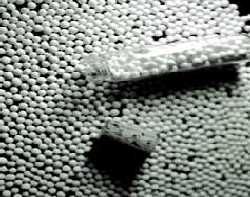In India: a matter of money and training
 Homoeopathy came to India in 1839 with John Martin Honigberger, a doctor who was invited to treat Ranjit Singh, the ruler of Punjab, for paralysis of the vocal cords and oedema. India's first homoeopathic medical college was established in Calcutta in 1881.
Homoeopathy came to India in 1839 with John Martin Honigberger, a doctor who was invited to treat Ranjit Singh, the ruler of Punjab, for paralysis of the vocal cords and oedema. India's first homoeopathic medical college was established in Calcutta in 1881.
Today, there are over 1,50,000 registered homoeopathic practitioners in India, and more than 100 pharma companies produce homoeo remedies exclusively. About 110 degree colleges and 12 post-graduate colleges impart homoeopathic education, adminis-tered by the Central Council of Homoeopathy. A separate Central Council for Research in Homoeopathy (CCRH) was established in 1978, which today has 51 units all over the country.
According to V P Singh, senior scientist at CCRH, the council has "developed anti-epidemic preventive treatments which were successfully used in smallpox and plague prevention". He adds, "Within the first few years of establishment of CCRH, we have done elaborate clinical trials to establish the efficacy of homoeopathic remedies for tonsilitis, sinusitis, pharyngitis, laryngitis, allergic rhinitis, contact dermatitis and allergic dermatitis, in collaboration with the doctors of the All India Institute of Medical Sciences (AIIMS), New Delhi... "
Singh, however, laments the termination of these trials due to non-cooperation of AIIMS administrators. Says V M Nagpaul, deputy director of CCRH, "Allopaths and medical scientists often do not cooperate with us and act like big brothers. The trials at AIIMS were made possible because of the interest taken by the then director, V Ramalingaswamy. As soon as he was replaced, everything changed and our trials ended abruptly. Today, we do not even have access to the full records of our trials.'
The main problem faced by homoeopathy researchers in India seems to be their lack of training in modern research methodology. But according to V P Singh, things are changing. "We are now taking advantage of modern pharmacological methods to conduct randomised placebo-controlled trials,' he says.
Since 1989, CCRH has been undertaking pilot studies to evaluate the efficacy of homoeopathy in clinical management of AIDS. "These trials have shown encouraging results. We found that patients showed an improvement in CD4 (T-cell lymphocytes) count, a well-known marker for demonstrating the restoration of cellular immunity which is impaired in AIDS patients,' Singh says. CCRH has started rigorous randomised double-blind placebo-controlled clinical trials to evaluate homoeopathic therapy on 70 AIDS patients since June, 1995.
Another impediment to the growth of homoeopathic research in India is the lack of funds. The present annual budget of CCRH with all its 51 constituent units put together is Rs 2.69 crore, an amount which is less than the average money granted for a single biomedical research project in an university. But Singh is hopeful: "Since last year (1995), we have a separate department for Indian systems of medicine and homoeopathy under the ministry of health and family welfare. So we hope that things will improve soon.'
Related Content
- Indizel, the bio-fuel brand by My Eco Energy set to lead India towards energy Independence
- Budget 2013-2014: speech of P. Chidambaram, Minister of Finance
- UNFCCC meet fails to secure emission commitments
- A year after Kalinganagar firing, tribal India refuses to shine
- Murder mystery in Bihar
- Mission impossible?
